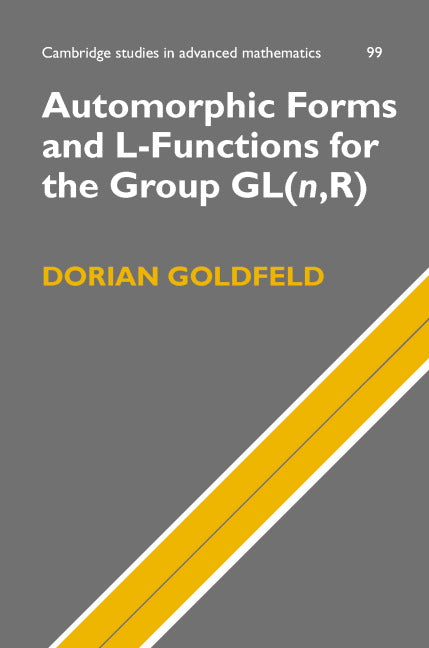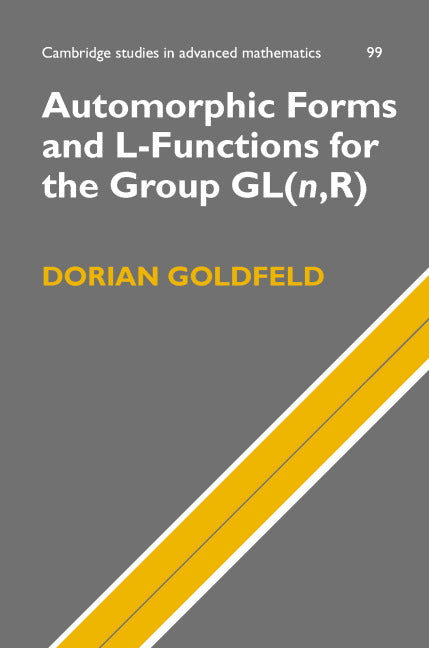Freshly Printed - allow 8 days lead
Couldn't load pickup availability
Automorphic Forms and L-Functions for the Group GL(n,R)
This book presents a self-contained graduate-level introduction to the topic of L-functions.
Dorian Goldfeld (Author)
9780521837712, Cambridge University Press
Hardback, published 3 August 2006
520 pages, 1 b/w illus.
23 x 16 x 3 cm, 0.823 kg
'Unfortunately, when n > 2 the GL(n) theory is not very accessible to the student of analytic number theory, yet it is increasing in importance. [This book] addresses this problem by developing a large part of the theory in a way that is carefully designed to make the field accessible … much of the literature is written in the adele language, and seeing how it translates into classical terms is both useful and enlightening … This is a unique and very welcome book, one that the student of automorphic forms will want to study, and also useful to experts.' Daniel Bump, SIAM Review
L-functions associated to automorphic forms encode all classical number theoretic information. They are akin to elementary particles in physics. This book provides an entirely self-contained introduction to the theory of L-functions in a style accessible to graduate students with a basic knowledge of classical analysis, complex variable theory, and algebra. Also within the volume are many new results not yet found in the literature. The exposition provides complete detailed proofs of results in an easy-to-read format using many examples and without the need to know and remember many complex definitions. The main themes of the book are first worked out for GL(2,R) and GL(3,R), and then for the general case of GL(n,R). In an appendix to the book, a set of Mathematica functions is presented, designed to allow the reader to explore the theory from a computational point of view.
Introduction
1. Discrete group actions
2. Invariant differential operators
3. Automorphic forms and L-functions for SL(2,Z)
4. Existence of Maass forms
5. Maass forms and Whittaker functions for SL(n,Z)
6. Automorphic forms and L-functions for SL(3,Z)
7. The Gelbert–Jacquet lift
8. Bounds for L-functions and Siegel zeros
9. The Godement–Jacquet L-function
10. Langlands Eisenstein series
11. Poincaré series and Kloosterman sums
12. Rankin–Selberg convolutions
13. Langlands conjectures
Appendix. The GL(n)pack manual
References.
Subject Areas: Complex analysis, complex variables [PBKD], Number theory [PBH], Algebra [PBF]


